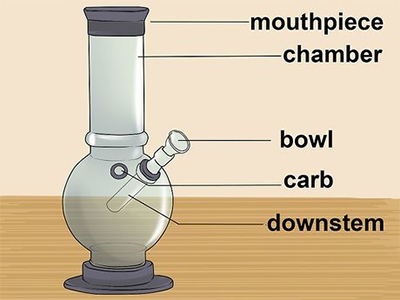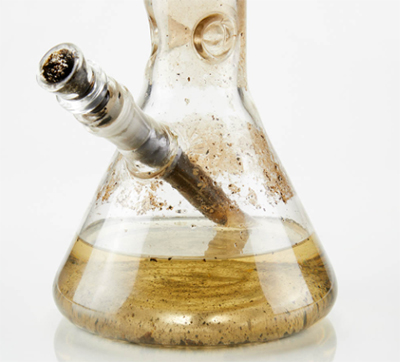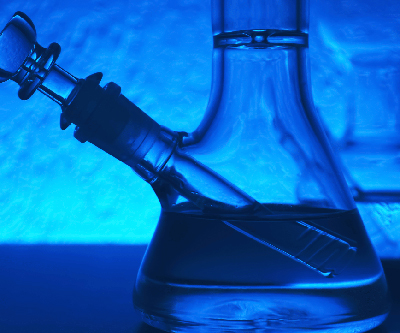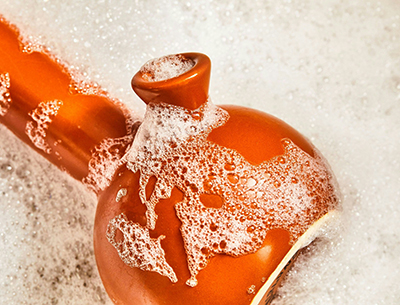Cannabis consumption has evolved significantly over the years, with enthusiasts constantly seeking new and improved methods to enhance their experience. Among the many ways to enjoy cannabis, the bong stands out as one of the most popular and efficient devices. Known for its smooth and potent hits, the bong has become a staple in the cannabis community. But how does a bong work, and what makes it so effective? Below, we look into the science and mechanics behind the cannabis bong, exploring its components, the physics of water filtration, and the overall impact on the smoking experience.
The Anatomy of a Bong
 To understand how a bong works, it’s essential to familiarize yourself with its main components: the anatomy of a bong. While bongs come in various shapes and sizes, they generally consist of the following parts:
To understand how a bong works, it’s essential to familiarize yourself with its main components: the anatomy of a bong. While bongs come in various shapes and sizes, they generally consist of the following parts:
Bowl
This is where the cannabis is packed and ignited. The bowl is typically removable, allowing for easy cleaning and refilling.
Downstem
The downstem is a small tube that connects the bowl to the water chamber. It allows the smoke to travel from the bowl into the water.
Water Chamber
This section holds water, which plays a crucial role in filtering and cooling the smoke.
Base
The base provides stability to the bong and often houses the water chamber.
Neck/Tube
The neck or tube is the long, cylindrical part of the bong that the smoke travels through after being filtered by the water. The user inhales through the mouthpiece at the top of the neck.
Carburetor (Carb)
Some bongs have a small hole, known as a carb, that allows the user to control airflow. Covering and uncovering the carb helps clear the smoke from the chamber.
The Physics of Water Filtration
The core principle behind a bong’s functionality lies in its ability to filter and cool the smoke through water. Here’s a step-by-step breakdown of the process:
Ignition and Inhalation
When the user lights the cannabis in the bowl and inhales through the mouthpiece, it creates a vacuum that pulls the smoke down through the downstem.
Water Filtration
As the smoke passes through the downstem, it enters the water chamber. The water acts as a filter, trapping impurities and ash. This filtration process also helps to cool the smoke, making it less harsh on the lungs and throat.
Bubble Formation
When the smoke enters the water, it creates bubbles. These bubbles increase the surface area of the smoke that comes into contact with the water, enhancing the filtration process.
Rising Through the Tube
After being filtered, the cooled and cleaner smoke rises through the neck or tube of the bong.
Inhalation
The user continues to inhale, drawing the smoke up the tube and into their lungs.
The Benefits of Water Filtration
 Water filtration is one of the primary reasons why bongs are favored by many cannabis users. The benefits of this process include:
Water filtration is one of the primary reasons why bongs are favored by many cannabis users. The benefits of this process include:
Smoother Hits
The water cools down the smoke, reducing the temperature before it reaches the lungs. This results in a smoother and less irritating hit.
Filtration of Impurities
Water helps trap particulate matter, including ash and tar. This means that the smoke inhaled is cleaner compared to other methods of smoking.
Improved Flavor
By filtering out certain impurities, water can enhance the flavor profile of the cannabis, allowing for a more enjoyable experience.
Larger Hits
The design of a bong allows for the accumulation of a significant amount of smoke, enabling users to take larger hits compared to joints or cannabis pipes.
Variations in Bong Design
While the basic principles of bong operation remain consistent, variations in design can influence the smoking experience. Some of the popular bong designs include:
Straight Tube Bong
This is the most straightforward design, featuring a simple tube with a bowl and downstem. It’s easy to use and clean.
Beaker Bong
Resembling a laboratory beaker, this design has a wider base, providing more stability and allowing for larger volumes of water.
Percolator Bong
Percolators are additional filtration devices within the bong. They come in various designs (tree, honeycomb, showerhead) and further break down the smoke into smaller bubbles, enhancing filtration and cooling.
Recycler Bong
This advanced design recycles the water through multiple chambers, providing continuous filtration and cooling. Recycler bongs are favored for their smooth and flavorful hits.
Gravity Bong
Utilizing water and air pressure, gravity bongs force smoke into the user’s lungs. They can deliver very potent hits and are often used for their intensity.
The Science Behind Bong Efficiency
 To comprehend why bongs are so efficient, it’s essential to delve into some scientific principles:
To comprehend why bongs are so efficient, it’s essential to delve into some scientific principles:
Thermodynamics
When smoke passes through water, it undergoes a cooling process. The water absorbs heat from the smoke, reducing its temperature and making it less harsh on the respiratory system.
Solubility
Certain compounds in smoke, like water-soluble toxins, are partially removed as they dissolve in the water. This contributes to the overall cleanliness of the smoke.
Surface Area and Filtration
The creation of bubbles increases the surface area of the smoke exposed to water. This enhanced interaction allows for better filtration of impurities.
Diffusion
Percolators and diffusers break the smoke into smaller particles, increasing the diffusion of smoke through the water. This leads to more effective cooling and filtration.
Health Considerations
While bongs offer a cleaner and smoother smoking experience, it’s important to note that no method of smoking is entirely risk-free. Inhalation of any smoke can still pose health risks, including respiratory issues. However, compared to other methods like joints or pipes, bongs do provide certain advantages:
Reduced Exposure to Carcinogens
The water filtration process helps reduce the number of carcinogens and particulate matter inhaled.
Less Irritation
The cooling effect of the water makes the smoke less irritating to the throat and lungs.
Potential for Harm Reduction
For those who prefer smoking cannabis, using a bong may be a less harmful option due to its filtration and cooling properties.
Maintenance and Cleaning
 To ensure a bong continues to function effectively and provide a pleasant smoking experience, regular maintenance and cleaning are essential. Here are some tips:
To ensure a bong continues to function effectively and provide a pleasant smoking experience, regular maintenance and cleaning are essential. Here are some tips:
Regular Cleaning
After each use, rinse the bong with warm water to remove residue. For a deeper clean, use isopropyl alcohol and coarse salt to scrub the interior.
Change Water Frequently
Stagnant water can harbor bacteria and mold. Change the water in your bong regularly to ensure optimal filtration and hygiene.
Inspect Components
Check the downstem, bowl, and percolators for clogs or damage. Replace any broken or worn-out parts to maintain efficiency.
Avoid Harsh Chemicals
When cleaning, avoid using harsh chemicals that could leave residues or damage the bong. Stick to isopropyl alcohol and salt, or use specially designed bong cleaning solutions.
Conclusion
The cannabis bong is a marvel of simplicity and efficiency, offering a superior smoking experience through its ingenious design and water filtration system. By understanding the components and principles behind its operation, users can appreciate the science and mechanics that make bongs a preferred choice for many cannabis enthusiasts. Whether you’re a seasoned smoker or a curious newcomer, a well-maintained bong can provide smooth, flavorful, and potent hits, enhancing your overall enjoyment of cannabis.

